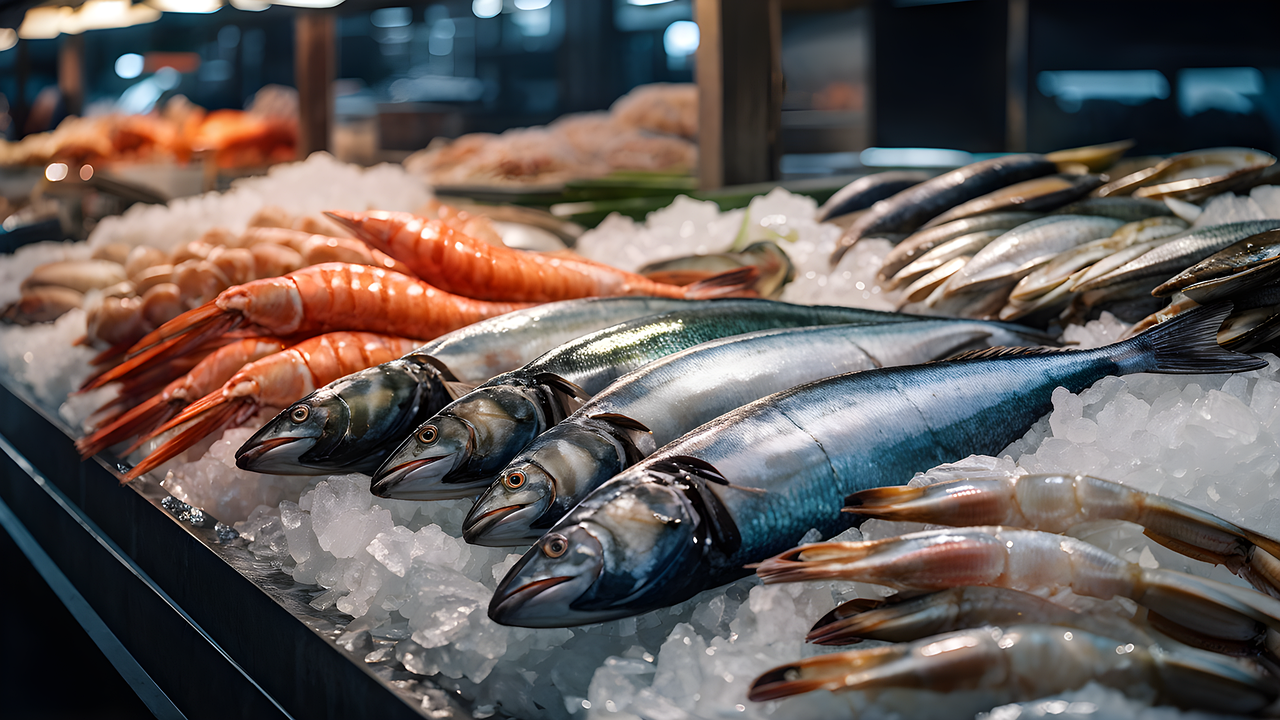Fish can be part of a healthy, low emissions diet. It is a good substitute for meat with high emissions, such as beef and lamb, and a good source of protein. But there are issues to consider when choosing which fish to eat. The problem of over-fishing affects the population of some species, and some fish have a carbon footprint much higher than others because of how they have been caught.
The carbon footprint of fish compared to chicken
Whether a type of fish is good to include in a low carbon emissions diet depends how it compares to the carbon emissions of chicken. Chicken is a low emissions meat and any meat equivalent to it or lower in terms of emissions is a good thing to include in your diet. As you can see from the graph below from Our World in Data, the best fish to eat is squid, tuna, salmon, cod, trout, herring and bivalves (mussels, oysters and scallops). Fish to avoid is lobster and shrimp. If you really like shrimp, farmed shrimp has a much lower carbon footprint than wild shrimp.

Wild fish versus farmed fish
The carbon footprint of fish will be dependent on how it has been produced. Wild-caught fish are those that live and are harvested in their natural habitats, such as oceans, rivers and lakes. Farmed fish have been raised in controlled environments like fish farms. Farmed fish have much lower carbon footprint compared to wild fish, so it is a better choice.
Areas of over-fishing
Another factor to consider when choosing fish is where it comes from. This is because over-fishing occurs more in some parts of the world more than other areas. Fishing stocks in richer countries tend to be healthier. These areas are North America (Canada and the USA), Europe, Australia and Japan. It is not clear how good the fish population are in Asia, Africa and South America because of lack of data. But in China, India and Indonesia, bottom-trawling – where fishing nets are dragged across the seabed – is very high in these countries and so it is unlikely fish stocks are good given they are caught in very large quantities. It is better to choose fish from North America or Europe or it may say on the packaging if it has been produced in a sustainable way.

Leave a Reply